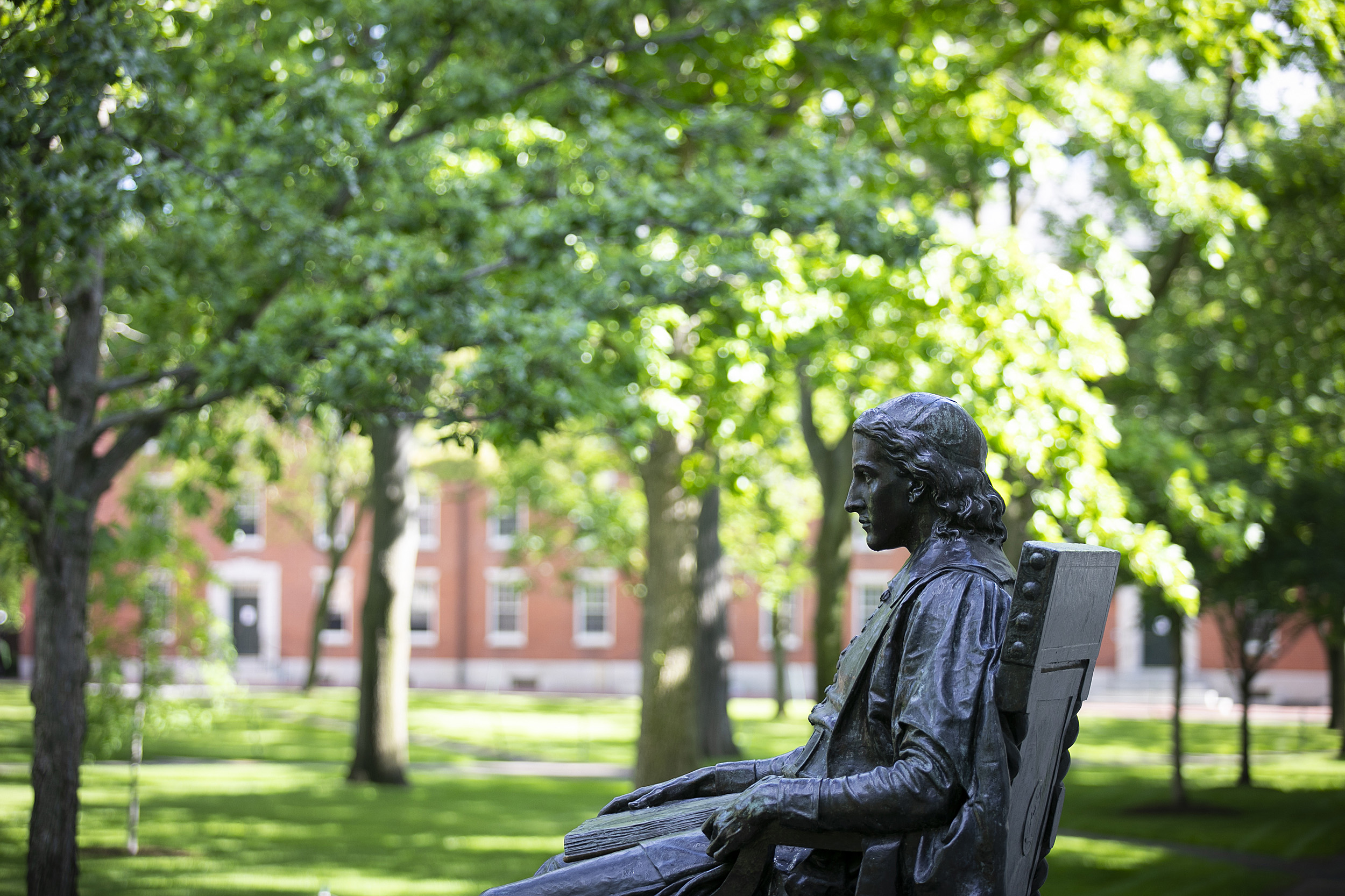
John Harvard keeps watch over the Yard.
Stephanie Mitchell/Harvard Staff Photographer
1,962 admitted to the Class of 2025
Financial aid a crucial factor in many decisions
Nearly 85 percent of those admitted to the Class of 2025 say they will come to Harvard in the fall. The College expects to welcome 1,962 first-year students this August.
This month, Harvard announced that it is planning for a full return to campus in the fall, including opening residential accommodations at full density and holding classes in person.
“We are thrilled to welcome the many promising students admitted in the Class of 2025 and look forward to seeing all they accomplish in their years at Harvard,” said William R. Fitzsimmons, dean of admissions and financial aid.
Despite the challenges presented by COVID-19 and required social distancing measures, students with the Undergraduate Admissions Council, Undergraduate Minority Recruitment Program, Harvard Financial Aid Initiative, Harvard First Generation Program, and Harvard College Connection called and emailed applicants to answer questions and highlight opportunities at Harvard for first-years before the May 3 deadline for accepted students to decide whether they would attend. The opportunities include 130-plus freshman seminars, a robust support system that provides more than 400 first-year advisers, 200 peer advising fellows, and 60 resident proctors, research opportunities with close faculty collaboration, 49 newly created secondary fields, and a recently revised and flourishing General Education program.
This year, financial aid was a crucial consideration for a large number of those enrolling. To date, roughly 55 percent will receive need-based grants, allowing families to pay an average of $12,700 a year. Harvard will require no contribution from 20.7 percent of families, representing those with annual incomes below $65,000. The students in this group will also receive $2,000 start-up grants to help with move-in costs and other expenses incurred in the transition to College. Since launching the Harvard Financial Aid Initiative (HFAI) in 2005, the University has awarded more than $2.4 billion in grants to undergraduates.
In addition to grants that cover the basic cost of attendance, Harvard provides more than $6 million a year in additional funding to students, supporting everything from winter coats to music lessons to studying abroad to public service internships to laboratory research experiences.
Harvard announced in 2020 that it would expand its financial aid program by eliminating the summer work expectation from aid awards beginning in the 2020–21 academic year and replacing it with scholarship funds. Due to the disruptions associated with the pandemic, Harvard removed the term-time work expectation for students receiving financial aid in that academic year. With the announcement that all students will return to campus this fall, students will be expected to contribute $3,500 through term-time work to meet their estimated personal expenses. Students receiving need-based financial aid at Harvard are not required to take out loans.
Due to COVID-19 related restrictions, Harvard temporarily revised its application requirements in this application cycle to allow students to apply for admission without requiring ACT or SAT test results. Recently, Harvard announced it would extend that waiver through the 2021‒2022 application cycle as well. Applicants will continue to be encouraged to explore Harvard College through online information sessions and virtual tour.
Women make up 52.6 percent of the Class of 2025, and men 47.4 percent men. Asian Americans make up 25.3 percent of the class; African Americans 14.3; Latinx 11.7 percent; and Native Americans and Native Hawaiians 1.5 percent. International students constitute 14.8 percent of the class. The geographical origins of the Class of 2025 are similar to last year’s class. First-generation college students make up 18.6 percent of the class and Pell grant recipients make up 18 percent.
Eighteen veterans and 32 students who expressed an interest in ROTC are among the members of the class. In recent years, Harvard has increased efforts to recruit individuals who have served in the U.S. military, working with groups affiliated with the Defense Department and joining the Service to School’s VetLink program in 2017.




